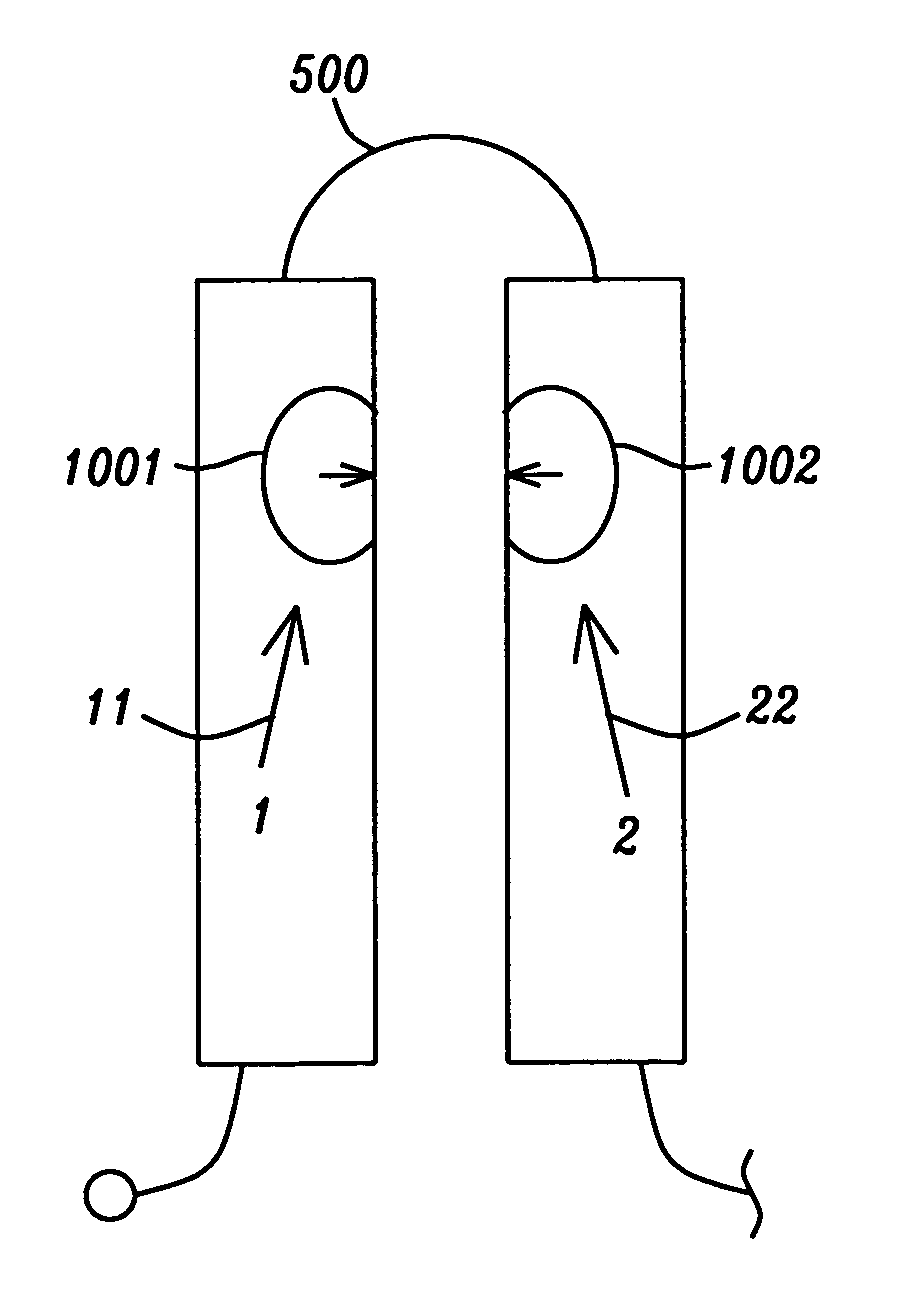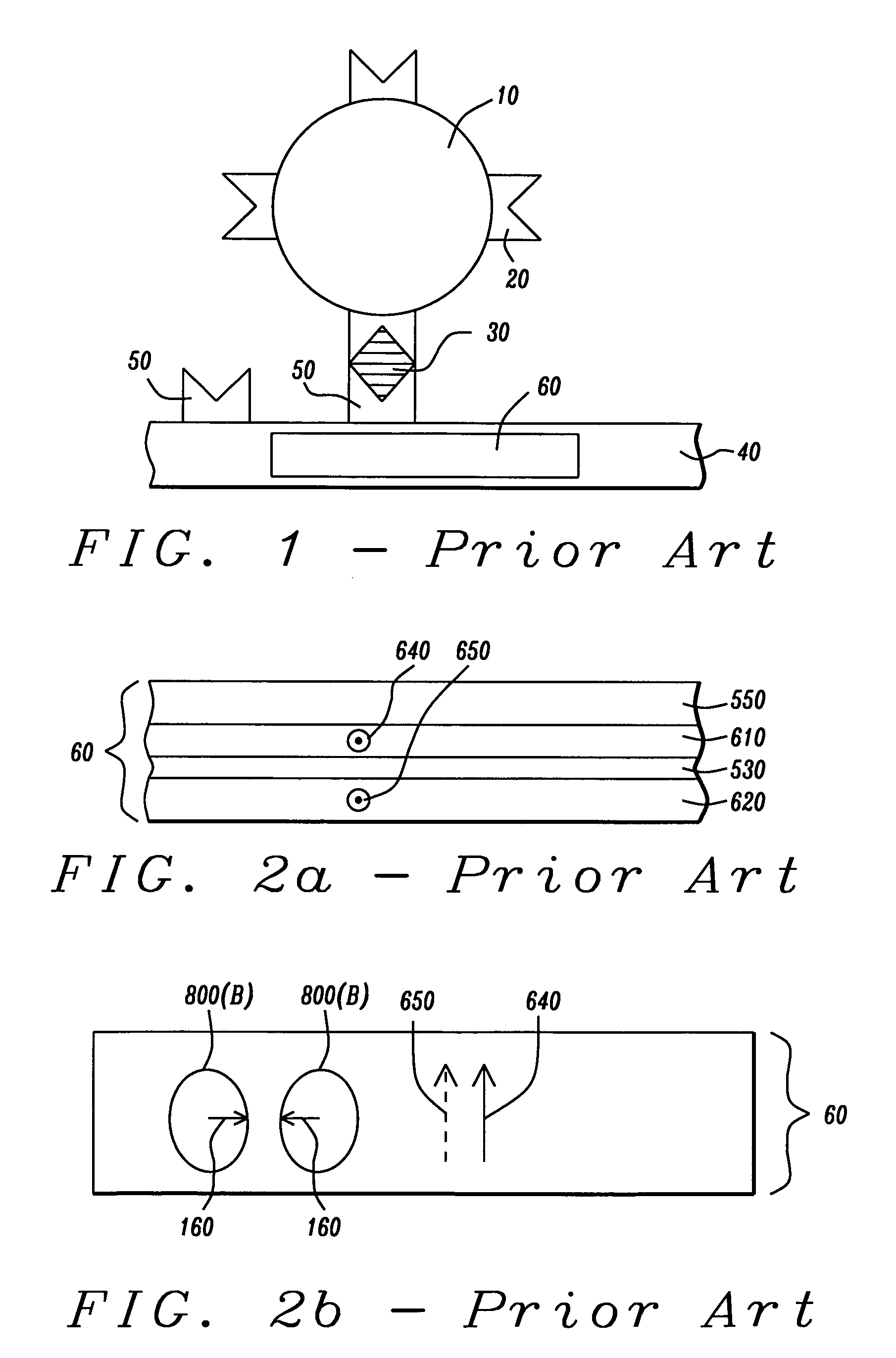GMR biosensor with enhanced sensitivity
a biosensor and enhanced technology, applied in the field of detection of small magnetized particles, can solve the problems of adverse effects, lack of reproducibility, negative hysteresis effect, etc., and achieve the effects of enhancing detectability, stable bias point, and adverse hysteresis
- Summary
- Abstract
- Description
- Claims
- Application Information
AI Technical Summary
Benefits of technology
Problems solved by technology
Method used
Image
Examples
Embodiment Construction
[0034]The preferred embodiments of the present invention are a GMR sensor stripe and an array of such GMR sensor stripes, capable of detecting the presence of magnetic particles or beads, typically bonded to chemical molecules. The GMR stripe and the array of stripes, by virtue of their formation, are not adversely affected by instability of a free layer bias point due to hysteresis. We use the term “stripe” to characterize a GMR sensor element and to emphasize the fact that it is deposited in the shape of a long, approximately rectangular strip or stripe. When used to detect magnetic particles bonded to target molecules (eg. in a bio-chemical assay) the array is formed beneath a surface on which are affixed bonding sites for target molecules. To perform the detection process, the target molecules whose presence is to be detected, as well as others that are not targets, are first magnetically tagged, by being bonded to small magnetic particles or beads that are subsequently magnetiz...
PUM
| Property | Measurement | Unit |
|---|---|---|
| thickness | aaaaa | aaaaa |
| thickness | aaaaa | aaaaa |
| thickness | aaaaa | aaaaa |
Abstract
Description
Claims
Application Information
 Login to View More
Login to View More - R&D
- Intellectual Property
- Life Sciences
- Materials
- Tech Scout
- Unparalleled Data Quality
- Higher Quality Content
- 60% Fewer Hallucinations
Browse by: Latest US Patents, China's latest patents, Technical Efficacy Thesaurus, Application Domain, Technology Topic, Popular Technical Reports.
© 2025 PatSnap. All rights reserved.Legal|Privacy policy|Modern Slavery Act Transparency Statement|Sitemap|About US| Contact US: help@patsnap.com



